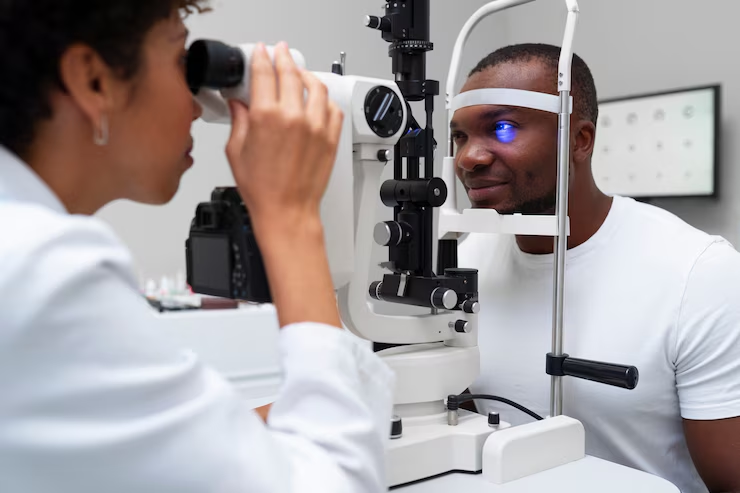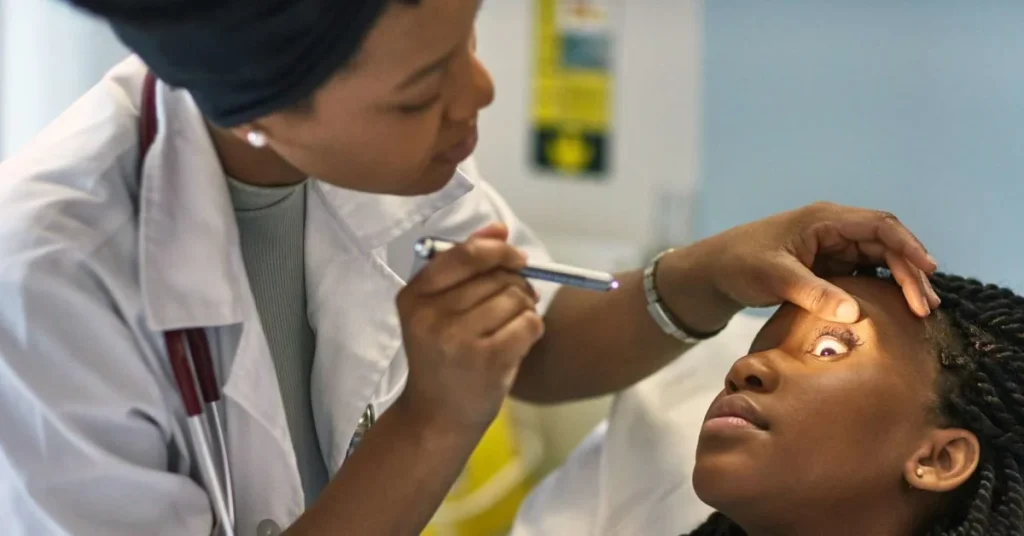Routine eye examinations are essential for early detection of vision problems and eye diseases. However, many people take them for granted, often assuming they have good vision until issues arise. Regular eye checks at key milestones help prevent long-term impairment and support overall development. These milestone checks begin at birth till death and ought to be taken seriously.

Routine eye checks should begin;
- Newborns (0-3 months): The Red Reflex Test detects congenital conditions like
cataracts, glaucoma, and retinoblastoma. - Infants (3-6 months): Should be checked via Pupillary Light Reflex and Fixation
Behavior tests assessing the ability to track objects and respond to light, detecting
early signs of amblyopia or strabismus. - 6-12 months: Eye check at this age is by the Corneal Light Reflex and Cover Test,
these help in the identification of misalignment and prevent lazy eye. - Toddlers (1-3 years): At this age, Visual acuity and ocular health exams are carried out
to detect refractive errors and other eye conditions. - Preschoolers (3-5 years): All children at this age MUST have at least their first eye
examination before commencing schooling. Tests for visual acuity, depth perception,
and color vision ensure proper learning development. - School Age (6-12 years): With growth comes vision changes, annual exams help
monitor vision changes affecting academic performance. - Teenagers (13-18 years): Regular screenings detect likely progression in conditions
such as myopia and other eye health issues and enable prompt attention to those
conditions. - Adults (19-60 years): Comprehensive exams help detect conditions like glaucoma
and diabetic retinopathy. - Seniors (60+ years): Exams focus on cataracts, macular degeneration, and glaucoma
to manage vision loss risks.
Regular eye exams are crucial at all ages and listed milestones act as guidelines to help
maintain eye health and prevent avoidable vision loss.



